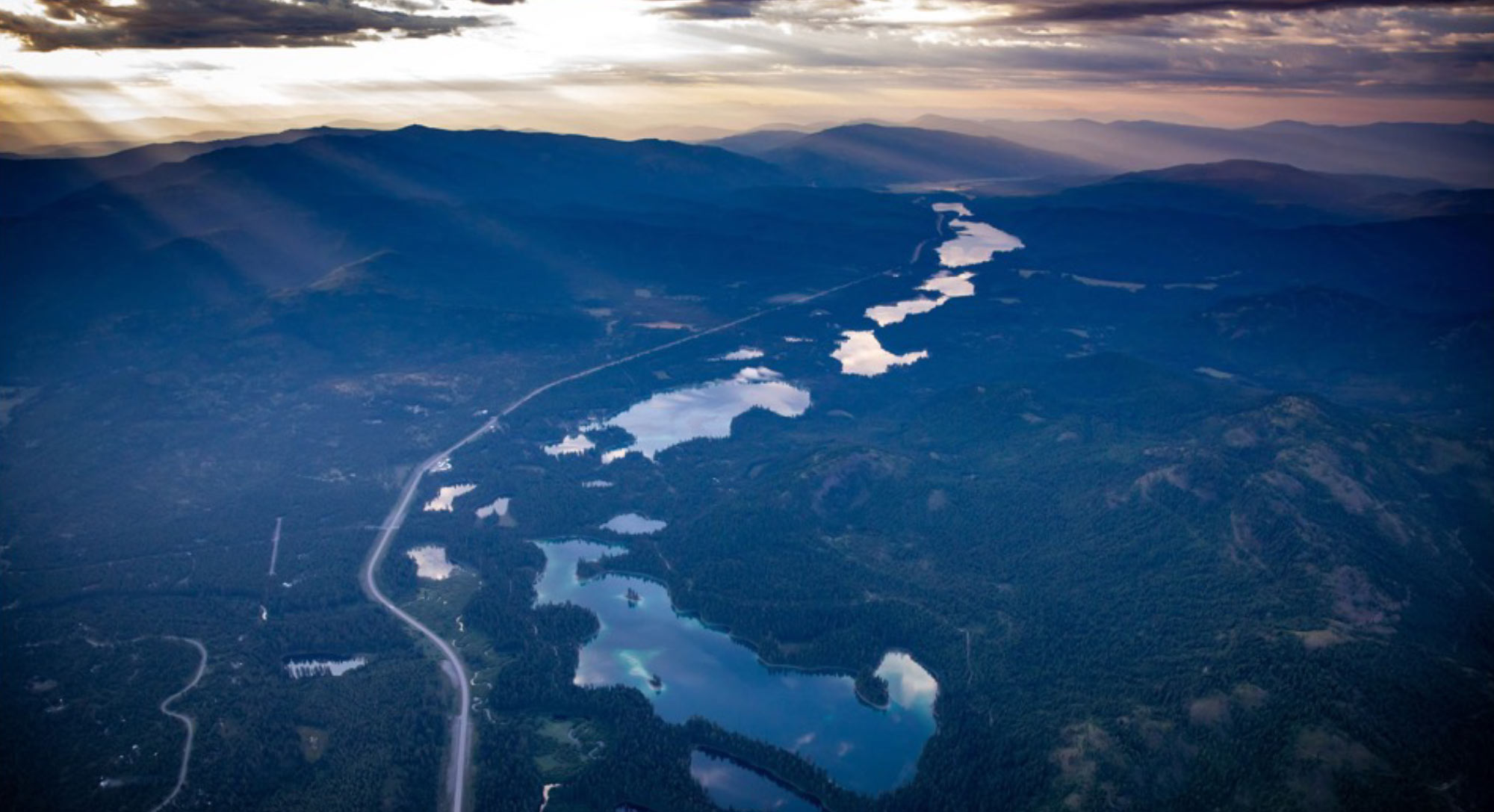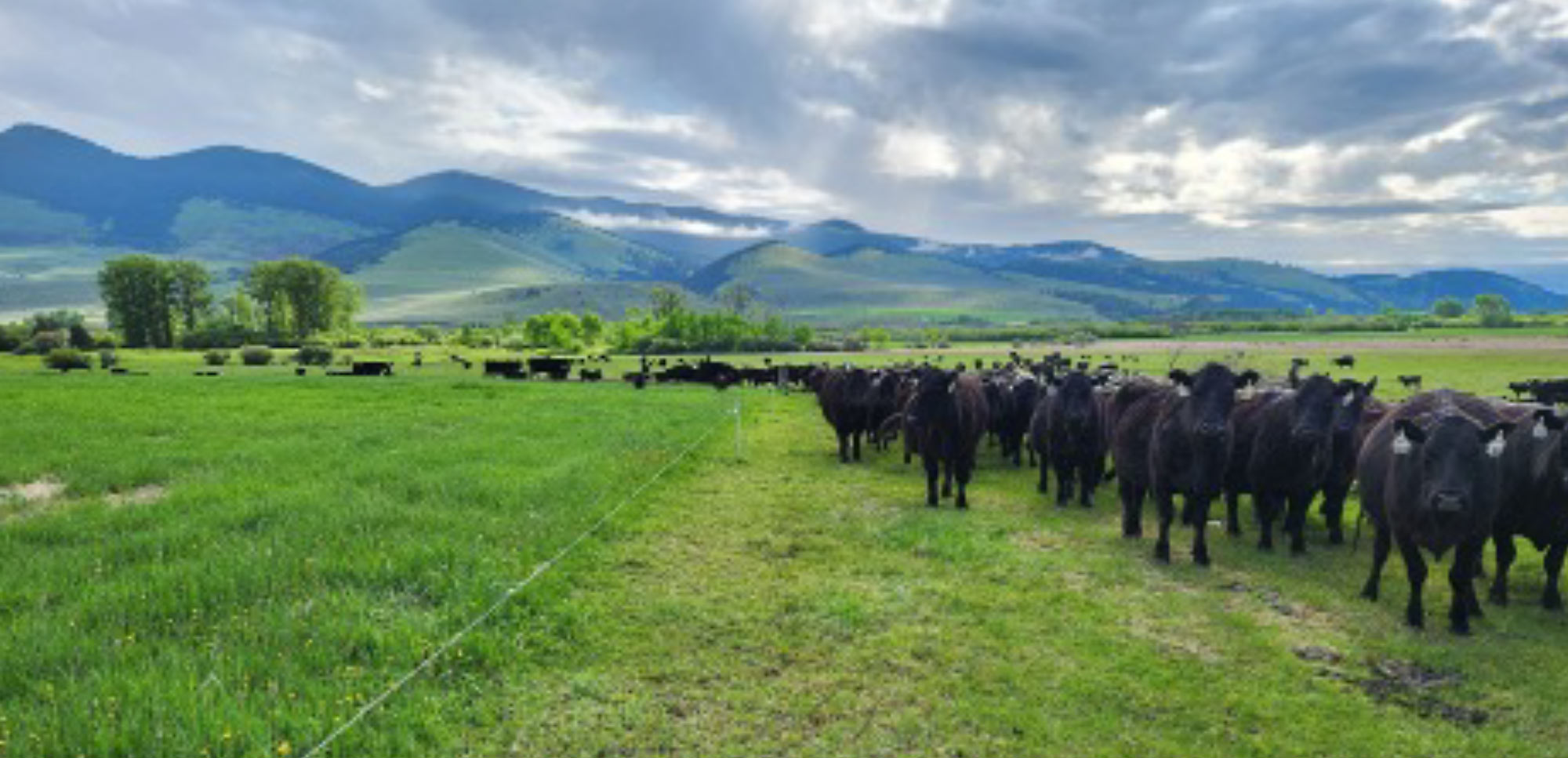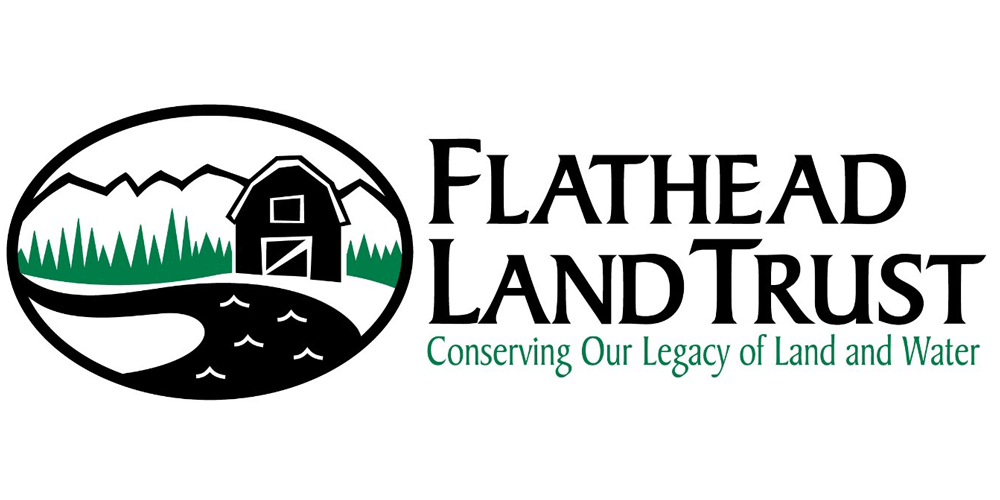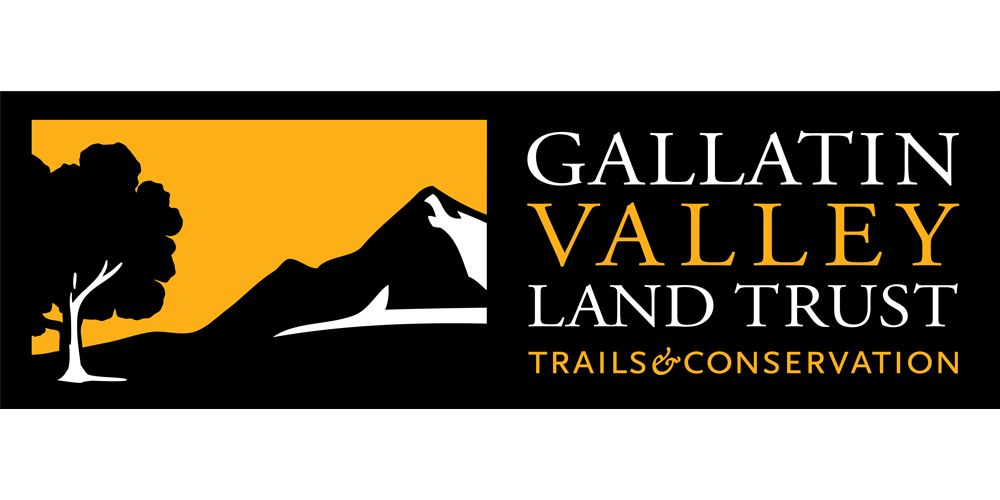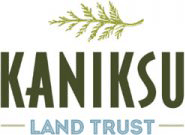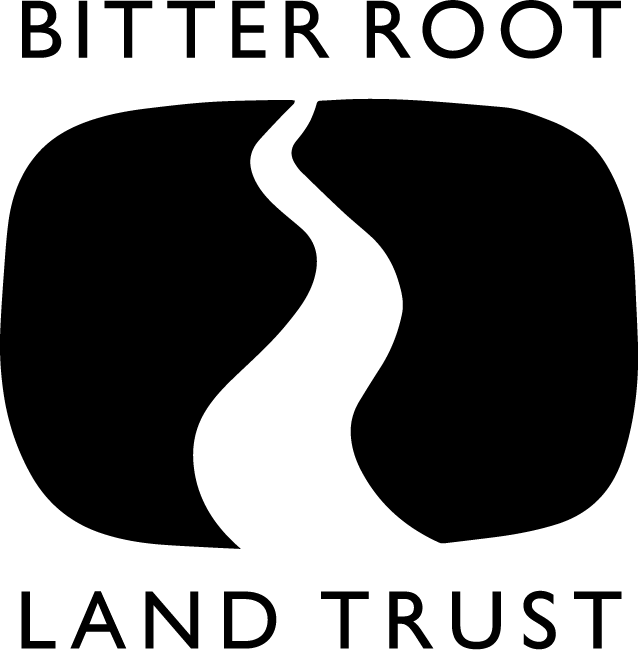The Montana Great Outdoors Project: One of the State’s Most Successful Landscape Protection Stories in the Making
How a land trust, a timber company, and a wildlife agency teamed up to save working and hunting lands for the entire northwest community.
Jim Williams raised his two kids hunting deer and elk from a swath of open landscapes in northwest Montana, a patchwork of timberland surrounding the Thompson Chain of Lakes between Kalispell and Libby. Each autumn, Williams, who calls Whitefish home and has lived in Montana for nearly 40 years, drives with his kids or other hunting partners for over an hour to a gated trailhead at the drainage of his choice. It’s been informal access here for decades, usually a handshake agreement between landowners and people like Williams. From wherever he parks his old truck, he hikes several miles to look for wildlife, hoping to put food in the freezer. More often than not, he doesn’t shoot any game. But he always enjoys the mountain views, sunshine, and fresh air. There’s a reason he loves this place: west of Glacier National Park and east of the Cabinet-Yaak Wilderness. It’s a unique and biodiverse region, home to some of the state’s best wildlife habitat and landscape connectivity: prime hunting grounds.
“We’re so fortunate in Montana to have almost all of our native ungulate species still here and in huntable numbers,” said Williams.
He would know, although he’s a former longtime wildlife biologist and regional director of Montana Fish, Wildlife and Parks.
But there’s nothing to keep this long-cherished public access that Williams and the scores of other people who hunt this land have enjoyed openly. This region is under immediate and unprecedented threat. The timber industry that primarily owns these lands is facing challenging economic times. Machines allow a single operator to cut down a tree, limb the branches, and load it all in a truck in one swift move—a process that previously required a handful or more workers. Then, the COVID-19 pandemic hit the industry even harder. Even as the cost of lumber soared, employees in paper mills were reduced by 15,000 people and in logging by 7,900. Since the 1980s, Montana’s timber harvest and log supply has dropped to just one-third of what it was.
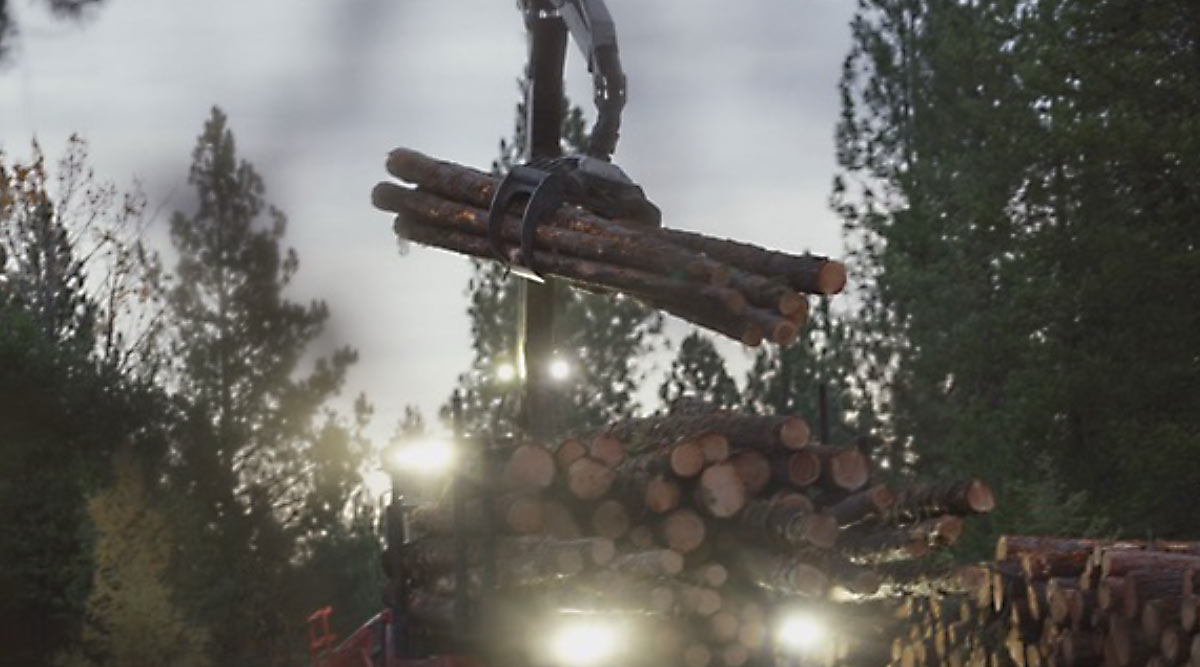
In addition, like much of Montana, the rise of remote work and the pandemic migration brought a significant influx of people to Flathead County. Since the spring of 2020, nearly 10,000 people have moved to the Flathead; Montana has added almost 50,000 people, a massive jump for a state that only recently numbered under one million. As a result, real estate prices have increased rapidly as demand has increased. Undeveloped lands – including working timber lands – have made way for subdivisions in what feels like a constant churn of new land ownership. It’s a perfect storm of conditions poised to irrevocably wipe out these working lands and the recreational uses around the Thompson Chain of Lakes that people here have enjoyed for generations.
“The pressure to develop and subdivide working lands and wildlife habitats has skyrocketed,” said Williams. “If these areas are lost to residential subdivisions, it will not only fragment the land but erode the access we all enjoy, which is a cornerstone of the Montana way of life.”
The threat has spurred what’s likely to go down as one of modern Montana’s greatest conservation success stories—and spurred a remarkable partnership to save this landscape and the Montana values it nourishes. Trust for Public Land (TPL), a land trust that strives for equal access for all people to enjoy public lands, Green Diamond Resource Company, the largest timberland owner in Montana, and Montana Fish, Wildlife and Parks (FWP) have been working toward protecting this landscape under conservation easement since Green Diamond took ownership. Called the Montana Great Outdoors Easement and spanning 86,000 acres across Flathead, Lincoln, and Sanders counties, it would ensure sustainable timber management, protect forestry and wood-product jobs, protect wildlife habitat and landscape connectivity, and continue providing public recreation access. It’s a crucial space for protecting wildlife migration; the easement abuts some of the wealthiest wildlife habitats in the northwest, including Thompson Chain of Lakes State Park, the 142,000-acre Thompson-Fisher Conservation Easement, and the 100,000-acre U.S. Fish and Wildlife Service’s Lost Trail Conservation Area, as well as Kootenai National Forest and Montana Department of Natural Resources and Conservation lands. It would protect around 300,000 acres, although not all of them will be contiguous.
On August 23, 2024, the state’s Fish & Wildlife Commission unanimously approved Phase 1 of the Montana Great Outdoors Conservation Easement. According to Bill Schenk, Montana FWP’s Land and Water Program manager, FWP broke up the easement into two phases because of the uncertainty of funding limitations and considering existing conservation easements in the area.
Some might call a partnership between a land trust and a timber company unlikely. But in Montana, protecting working landscapes that provide hunting opportunities and jobs that reflect local values is a classic conservation definition.
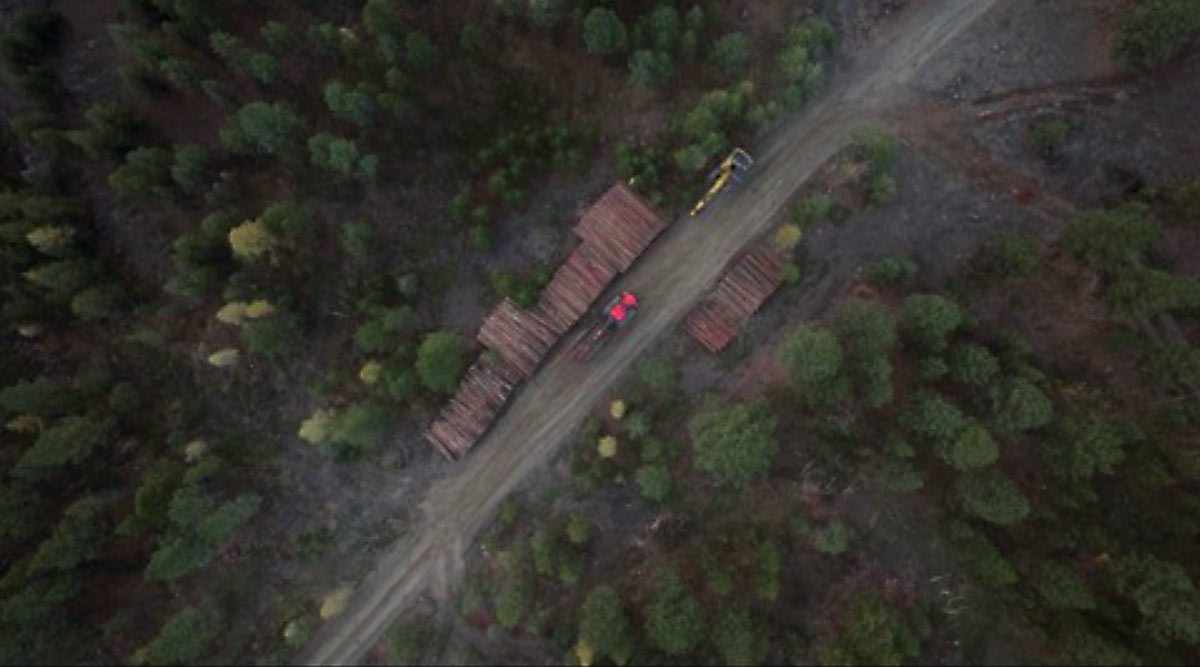
“It’s just great to have a committed landowner committed to sustainable forestry management for the long haul and interested in keeping public recreation access opportunities alive on their lands.”
Dick Dolan, Northern Rockies Director of Trust for Public Land
The Beginnings of Voluntary Protection
When Southern Pine acquired the land, it began exploring conservation options, including developing a relationship with TPL. In purchasing the land from Southern Pine, Green Diamond inherited specific ongoing conservation projects and existing relationships, including those with TPL. At the time, Green Diamond assured the public that it would continue managing the working timberlands and ensure public access as part of their long-term plans for a conservation easement – which has become the Montana Great Outdoors Easement.
“This project is not the first of its kind but is refreshing in the sense that we have been partnering with logging companies for 25 years in northwestern Montana,” said Dick Dolan, Northern Rockies Director of Trust for Public Land. He points to the Montana Great Outdoors Easement as part of a much larger effort by TPL to protect one million acres of working lands across Montana before they’re sold off to the highest bidder for development or land costs become too extravagant to prohibit conservation purchases.
“It’s just great to have a committed landowner committed to sustainable forestry management for the long haul and interested in keeping public recreation access opportunities alive on their lands.”
Green Diamond is a sixth-generation, family-owned company that has operated for 134 years. It owns 1.6 million acres of forestland in four western states, including 291,000 acres in northwestern Montana. Green Diamond intends to maintain nearly all those Montana acres under the Montana Great Outdoors Easement. “We aim to support working timberlands by discouraging fragmentation, poorly planned development, rural sprawl and increased Wildland Urban Interface areas,” wrote Jason Callahan, policy and communications manager for Green Diamond Resources, in an email. “We support rural economies by securing resource lands for long-term resource production and provide an alternative for landowners to continue managing their lands as working forests rather than selling them off for their highest bid use, which is often development.”
Callahan continued that Green Diamond and TPL see eye to eye on shared values, like the value of conserving working forests and the renewable resources they can provide and the benefits to the public of having open space and maintaining a working land base to support rural natural resource economies.
“These habitats that TPL is working on are corporately owned timberlands, which are critical to keeping working lands that still contribute to the counties and provide jobs,” said Williams.
In the summer of northwestern Montana, Williams says, people hike and climb mountains, float rivers and lakes, and gather huckleberries; as the nights wax longer and the morning temperatures become chillier, it reminds people to collect firewood before hunting season. It is all part of the natural transition: huckleberries to firewood to hunting, “an annual cycle of mountain life here,” said Williams. “It connects us in today’s modern hustle and bustle world to the ancient dance of hunting and gathering that purchasing food in the grocery store can’t provide. The ability to legally hunt deer and elk is a privilege. We must step up to maintain that opportunity by getting involved in projects like the Montana Great Outdoors to keep these lands open for wildlife and the public.”
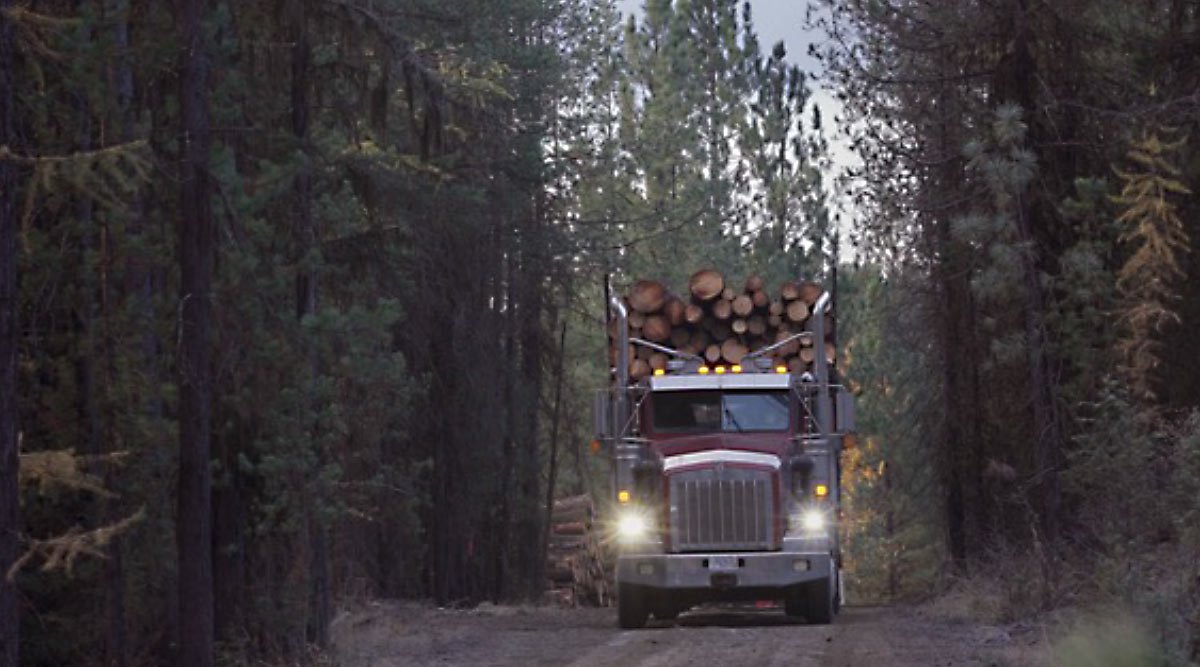
More and more people are moving to Montana because of the quality of life. People want public lands to recreate in. They want to raise their kids close to nature and take them fishing, hunting, hiking, and berry picking. For many, Montana is the “Treasure State” in the sense of cherishing its public lands and open space. This conservation success story is one of several that helps lower the anxiety of the state’s citizens worried about unchecked development.
These are the same reasons Williams chose to live, work, and raise his kids here. His daughter even became a junior hunter education instructor when she was younger. His kids sometimes tag along to go hunting but are now adulting in that busy stage in life. His children are grown and live independently but continue to eat wild game.
The Funds That Made It Possible
This project wouldn’t be possible without a mix of public and private funding, including the U.S. Forest Service, which pledged $20 million through its Forest Legacy Program. Other entities have stepped up, including TPL, which raised almost $4.2 million in private charity and Green Diamond has voluntarily donated the remaining balance of $13.9 million.
The State of Montana also plans to contribute $1.5 million through its Habitat Montana program, a state-administered fund to conserve Montana’s most critical and threatened wildlife habitat. With the help of the U.S. Forest Service Forest Legacy Program, the State has expanded its scope of habitat conservation to include high-priority forests that are threatened to be developed and lost forever—like the Montana Great Outdoors Easement.
The money is all in place to cover the cost of the $39.5 million easement sale, but one obstacle has arisen. WRH Nevada Properties, supported by the Gallatin Gateway-based Citizens for Balanced Use, filed a last-minute lawsuit on August 7 to halt the easement, claiming it might impact the future development of their subsurface mineral rights.
However, on October 8th, a Lincoln County District Court judge dismissed their argument, ruling that “it is unreasonable to interpret the plain language of the Proposed Easement as interfering with WRH Nevada’s mineral rights.” WRH Nevada Properties has already appealed this ruling to the Montana Supreme Court.
On October 21, the Montana Great Outdoors Easement went before the Land Board, which comprises the governor, attorney general, secretary of state, superintendent of public instruction, and state auditor, and makes decisions about what happens to state lands, including easements. The Land Board approved the purchase with a vote of three to two, with the condition that new language be crafted in the easement to clarify further that there will be no impacts on WRH’s mineral rights. Montana Fish Wildlife and Parks and other partners have said it will be a “top priority” to craft language that will satisfy the Land Board. It’s expected the Land Board will provide final authorization before the end of 2024.
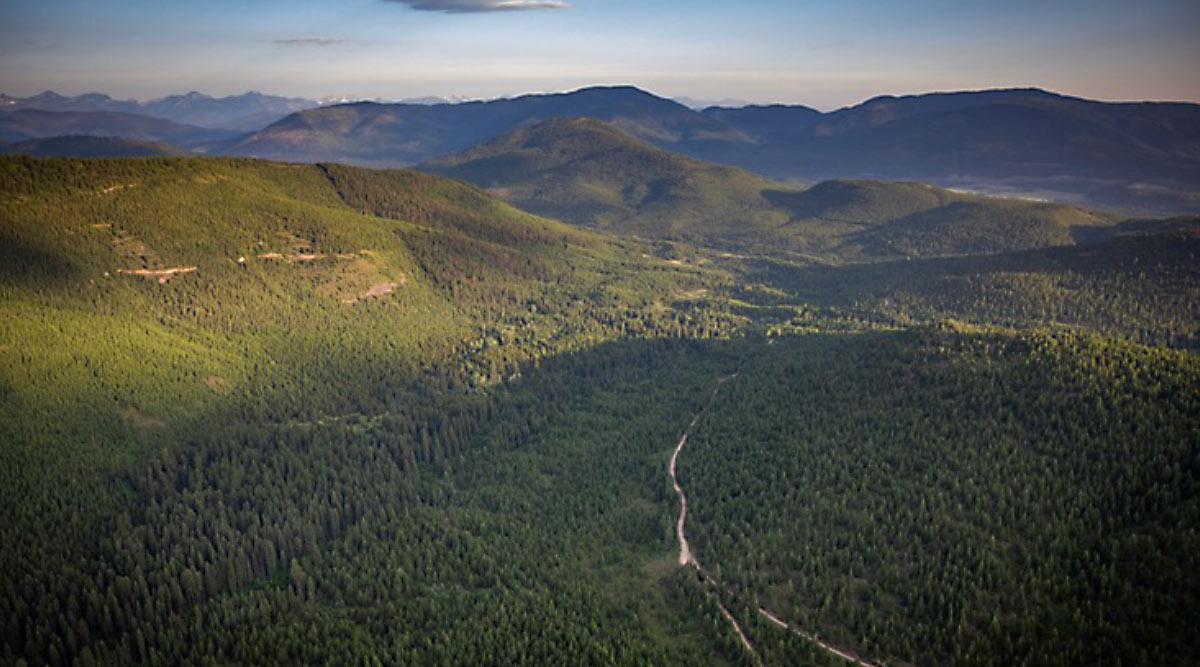
Williams worked for the state wildlife agency for over thirty years. He cannot recall how often somebody told him they lived and worked here to raise their children in a healthy environment and for Montana’s hunting and fishing opportunities, regardless of personal politics. Some people even told him they work all year for the five-week hunting season in the fall. “It was their scenery tax to make lower wages and endure long winters for the opportunity to legally pursue deer, elk and antelope in the fall.”
Williams and others in the community surrounding the easement are paying close attention to the outcome of the Montana Great Outdoors Project. This land is the community’s supermarket, playground, garden, gym, orchard and church. People all need a place like this that is wild and a place to unwind from the toils of this world. “It’s such a unique project that highlights Montanan’s ability to collectively shelve their political beliefs and ideology and come together to fund and deliver permanent conservation,” said Williams.
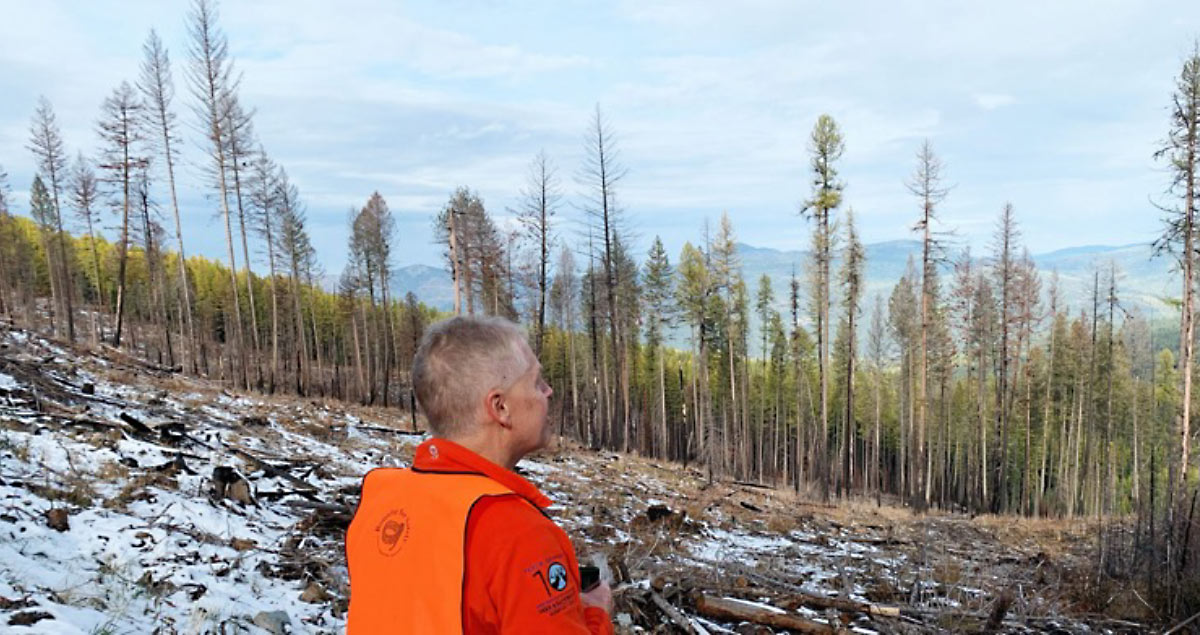
The Growing Demand to Safeguard Montana’s Lands and Livelihoods
As the state grows and transforms at an unprecedented pace, threatening values and ways of life, landowners increasingly turn to private land protections to preserve open and working landscapes.
On a windswept grassland, intermixed with sagebrush and edged by creeks, sits the Mannix Ranch in west-central Montana. Hundreds of black cows dot the landscape in different herds throughout the 58,000 acres of working lands the Mannixes manage, of which one-third is leased from other private landowners and another third is leased off of public land. The ranch is cupped in the Blackfoot Valley by foothills and hemmed in by the rounded Garnett Range, with the Scapegoat Wilderness towering to the north. Much of the land still looks like it did when the Mannix forebears built the original homestead here 142 years ago.
That’s no accident, according to Logan Mannix.
Mannix left the ranch for eight years to teach high school science in Helena but returned in 2016. Now in his late thirties with three kids of his own, he recalls that a land ethic to leave the land better than you found it was embedded in him at a young age. “The land that we manage, whether owned or leased, supports many different values, including ones that we may not share: value for grazing animals, habitat for wildlife, viewscapes for people passing by, water quality for fisheries or groundwater and other resources,” he said.
Like many Montanans, Logan has experienced significant change since his return to the ranch, a change that directly affects his way of life.
“I started to wonder if this valley was the one that wouldn’t be subdivided, but the pandemic proved that wrong,” he said. “Ranches on three sides sold in one year. Fortunately, one is still held together, and we’re getting to lease it. However, the two ranches on the other side of us sold and were immediately subdivided to the smallest possible acreage allowed by county zoning.”
This encroaching development on working lands isn’t an isolated phenomenon in the Blackfoot Valley. Montana is undergoing a transformation, a growth surge, at a pace unprecedented in our lifetimes. The pandemic-induced migration, the rise of remote work, a tech boom, and other factors have contributed to a significant population increase. Home and land prices have skyrocketed, leading to heavy development pressure. As a result, we are witnessing rapid rural change threatening Montana’s values and ways of life. This situation has created an extraordinary urgency to conserve private working lands, open spaces, and public access for hunting, fishing, and other recreation—before they are lost forever. Thus, landowners like the Mannix family are turning in unusual droves to voluntary private land protections: mechanisms to keep their ranches intact as working lands, provide wildlife habitat, and keep their lands in the family.
“I hope this landscape remains largely intact when our kids and grandkids inherit this valley,” said Mannix. “It would be a neat legacy for our ranch to be a part of that. But protecting that will take more than just our ranch; hopefully, we’re one of many.”
Logan Mannix, Mannix Ranch
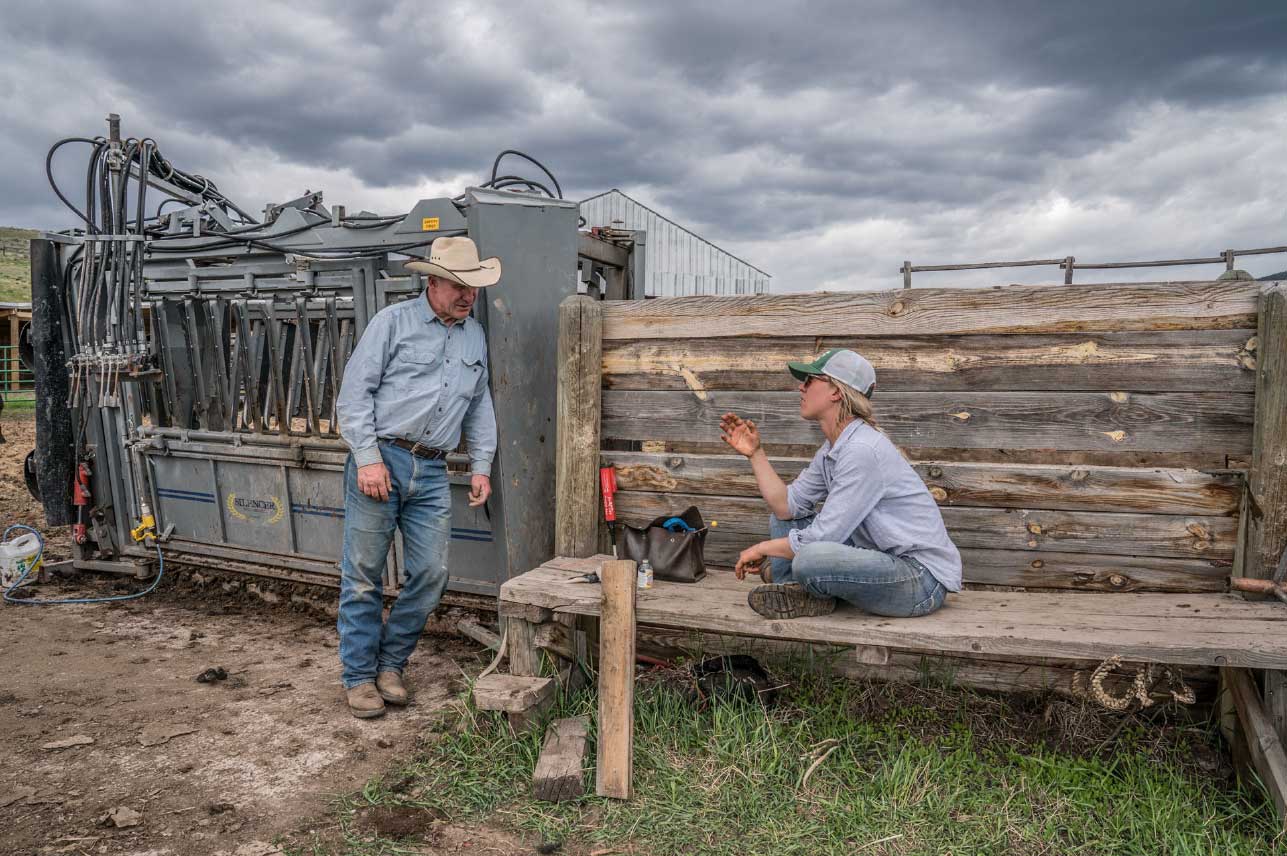
Montana’s Changing Landscape
Since 2020, Montana’s population has grown 4.8 percent, making it the fourth fastest-growing state, adding nearly 50,000 people. Most in-migration has occurred in the state’s western portion, in cities like Bozeman, Kalispell, and Missoula. But now, we’re seeing growth spilling over into smaller counties that neighbor the most prominent cities. Musselshell County, between Helena and Billings, has grown 31 percent. Broadwater County, between Helena and Bozeman, has grown by 14.9 percent. Three counties north and west of Kalispell have seen steady growth, including Mineral County, which has grown 13.6 percent; Lincoln County, which has grown 11.5 percent; and Sanders, which has grown 10.8 percent.
While Montana’s landscapes are a magnet for many, this growing popularity substantially threatens our open lands. Some parts of Montana’s landscape appear as they did hundreds of years ago when Lewis and Clark passed through because farmers and ranchers have permanently protected their land using conservation easements. However, the increasing population and growth remains a serious cause for concern among Montanans.
Earlier this year, 90 percent of registered Montana respondents described development and sprawl into open lands as a severe problem. Gavin Ricklefs, Managing Director for the Heart of the Rockies Initiative, points to a recent economic study to illustrate the growing concern: Since 1990, over 1.3 million acres of undeveloped land across Montana, primarily agricultural land, has been converted to residential subdivisions. Nearly half of the homes constructed have been on lots that average ten acres. One-quarter of all homes in Montana have been built just since 2000. Every month, Montana loses 1,500 acres of open land to development—even as Montana’s agriculture brings in $5.5 billion annually and is responsible for 30,000 jobs on 58 million acres of land that produce food to feed the state, the nation, and the world.
Beyond the acres lost, fragmenting working lands can have outsized impacts on farmers and ranchers. Landowners on neighboring working lands often enjoy a culture of helping each other, as during calving or haying. However, once neighboring lands are subdivided, conflicts can arise between residential neighbors and farms and ranches. For example, newcomers to Montana may not be familiar with what it’s like living next to working lands with tractor lights on late at night.
“There are some real pressures that come with conversion and adjacent non-agriculture landowners,” said Ricklefs.
Finding a Solution
The Mannix family faced many of the same challenges and struggles to keep afloat that other ranchers have, even before the pandemic hit. These included soaring land prices, rising machinery costs, decreasing agricultural production, and some kids heading to urban centers. However, some Mannix family members, like Logan, saw the value in returning to the ranch and connecting to the landscape of their youth. The problem was affording to keep the land as its value soared.
“It’s truer than ever now, but for a long time, we were aware that the blue-sky value of the ground was worth more than the value that we could produce off of it,” said Mannix. “My family were concerned about sprawl and they didn’t want to see it subdivided.”
The family learned about a solution that has become increasingly popular in Montana: conservation easements. These are voluntary legal agreements between a landowner and a land trust or government agency that permanently protect the land’s uses to enhance its working and conservation values.
“Having conservation easements on a rancher or farmer’s property allows them the ability to extract some of the value of the equity of the land without having to sell it,” explains Dan Huls, Ravalli County Commissioner, who has been integral in supporting the Ravalli County Open Lands Bond Program.
The majority of the Mannix Ranch has now been placed in conservation easements, which have given the family more cash to purchase neighboring ranches for sale and allow them to expand their operations. This has, in turn, allowed more family members to return to live and work on the ranch, and it’s secured their land’s future for generations to come. He says that Mannix’s grandfather, father, and uncles could have thrown in the towel, cashed out, and retired.
“Instead, they continue to put in the hours, and that’s really humbling. I hope our generation can do the same.”
Easements are “a really powerful tool,” says Mannix. He says it’s essential to get easement language right “so that future buyers of farms or ranches protected by a conservation easement can be confident their money is well spent. It also allows management to be flexible and adaptable when moving forward. It’s hard to predict the future of what plants to grow, livestock to run, whether or not to harvest timber or control-burn sagebrush.”
Land trusts work closely with ranchers to ensure the greater landscape is connected with the most critical habitats. They’re deliberate about where they accept easements because a conservation easement isn’t always the right tool for every family or parcel of land, and some of these negotiations may take years to decades to finalize.
“Conservation easements are fundamental tools consistent with Montana’s values. They’re landowner driven. Easements reflect the ability to choose a future for your land, which is an exercise of private property rights.”
Gavin Ricklefs, Heart of the Rockies Initiative
The Value of Voluntary Private Lands Protection
Protecting vast swaths of working lands has value beyond just the family that owns that land. When ranches are sold and parceled up, Mannix says, “It’s usually not younger people with families who buy those parcels, but older people who buy second or third homes or places to retire.” Many of these transplants don’t get involved in the community. “If we have working ranches like ours, we can provide jobs to young people in the valley with kids in school. I’ve seen family ranches versus corporate ranches, and those ranchers and their workers are often less involved, whether it’s the school board, rodeo committees, or fire departments.”
The Mannix Ranch, part of the Old Salt Co-op, also offers local beef to about 20 businesses throughout Montana, helping to boost the local economy. Some of their conservation easements allow public access for hunting, while others have permitted essential wildlife connectivity or restoration work.
“The value of land will continue to go up in Montana, and at some point, we will lose the heart of what makes this state and our landscapes so special,” said Mannix. “I hope we work hard to conserve working landscapes because if we lose ranches and farms, there will be less land protected and less land intact. I hope our ranch can remain viable, supporting families in the valley perpetually, and we can manage it well enough that it’s an intact landscape with beautiful views for the public, plenty of habitat for wildlife and other grazing animals, and continue to co-exist with predators.”
“Conservation easements are fundamental tools consistent with Montana’s values,” said Ricklefs. “They’re landowner driven. Easements reflect the ability to choose a future for your land, which is an exercise of private property rights. They’re not right for every piece of land or every family. Still, easements are a vital option that respects the values of landowners and property rights while also benefitting the local and regional community by preserving agricultural and timber production, wildlife habitat, and water quality. That’s why conservation easements have had such a strong reception in our state. Private lands are critical to what it means to live in Montana, especially when we have this tool—conservation easements—that allows landowners with long-term visions for their farm or ranch and for the state to act on behalf of all of us.”
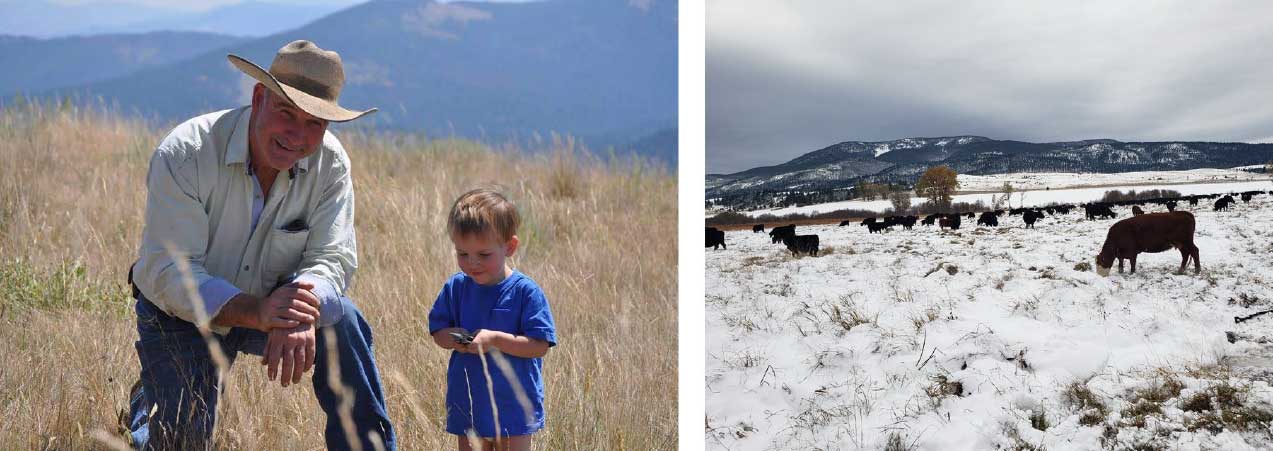
According to Ricklefs, Montana leads the nation in private land conservation in quantity and habitat quality. It’s also the leading state in utilizing Farm Bill conservation funding to ensure family farms and ranches are still in production and contributing to the economy for future generations. Compared to other states, Montana’s vast and diverse landscape, coupled with a small population, offers millions of acres of open land, including farms, ranches, and forests.
“Multi-generational families could have sold in any of the booms that the Bitterroot has seen in the 80s, the 90s, the 2000s, and certainly with where land values are now at all-time highs. But that’s not what they wanted to do,” said Ricklefs. “They wanted to ensure that their family legacy is protected and that their operation is still viable and can be passed down to the next generation, whether in their family or to the neighbor leasing it. One landowner has frequently said that completing a conservation easement on his land is a source of family pride second only to watching his kids turn out okay.”
The Future of Protecting Lands in Montana
According to Ricklefs, the question of whether Montana is fully prepared for the pace of change in the state has yet to be determined. He sees far more demand for conservation easements from Montana’s farmers and ranchers than land trusts can currently service.
“With limited resources and unprecedented demand, land trusts must be strategic in determining when, where, and how they work with families who desperately want to protect their farm or ranch now,” he said. “These limitations have real impacts on Montana’s farm and ranch families. A few landowners are in a position where they’re fortunate enough to be able to wait a year or two or more to protect their land permanently, but most aren’t. Our challenge as Montana continues to proliferate and farmers and ranchers increasingly look to conservation easements is to ensure these tools are consistent and available to landowners.”
Adequate funding is critical to meeting this demand. Montana Fish, Wildlife and Parks has also responded by boosting the Habitat Montana fund with tax revenue from state marijuana purchases. But the long-term fate of that fund is uncertain.
“We’re very grateful that Montana is a national leader when it comes to utilizing the federal Farm Bill conservation dollars,” said Ricklefs. “But we are nowhere close to having the financial resources and even the human resources available to service the demand out there for all the conservation easements across the state.”
As Montana continues to grow, one thing is for sure: Agricultural land and working ranches are feeling more pressure than ever to sell and the next ten years will be crucial for private land conservation.
“I hope this landscape remains largely intact when our kids and grandkids inherit this valley,” said Mannix. “It would be a neat legacy for our ranch to be a part of that. But protecting that will take more than just our ranch; hopefully, we’re one of many.”

